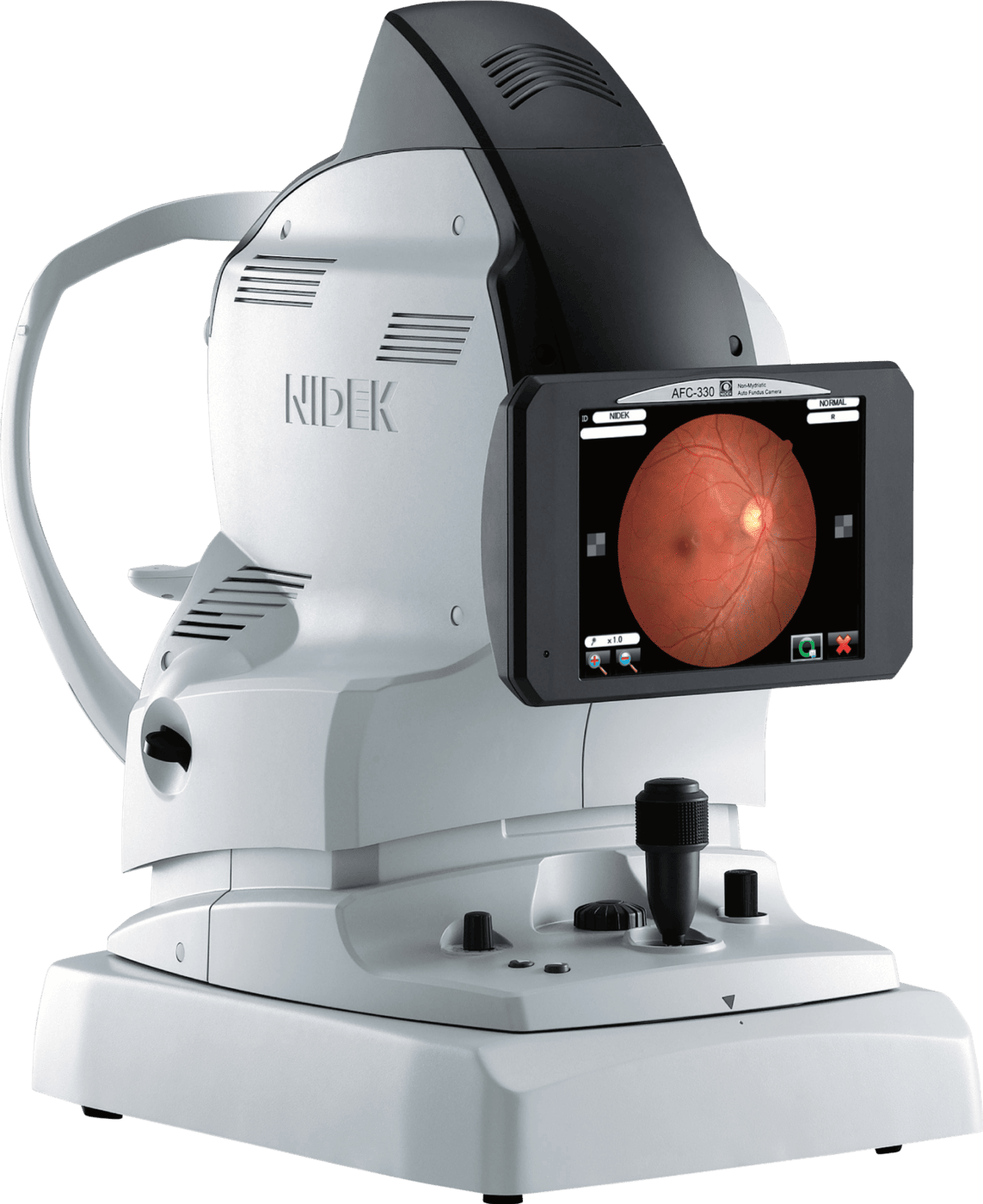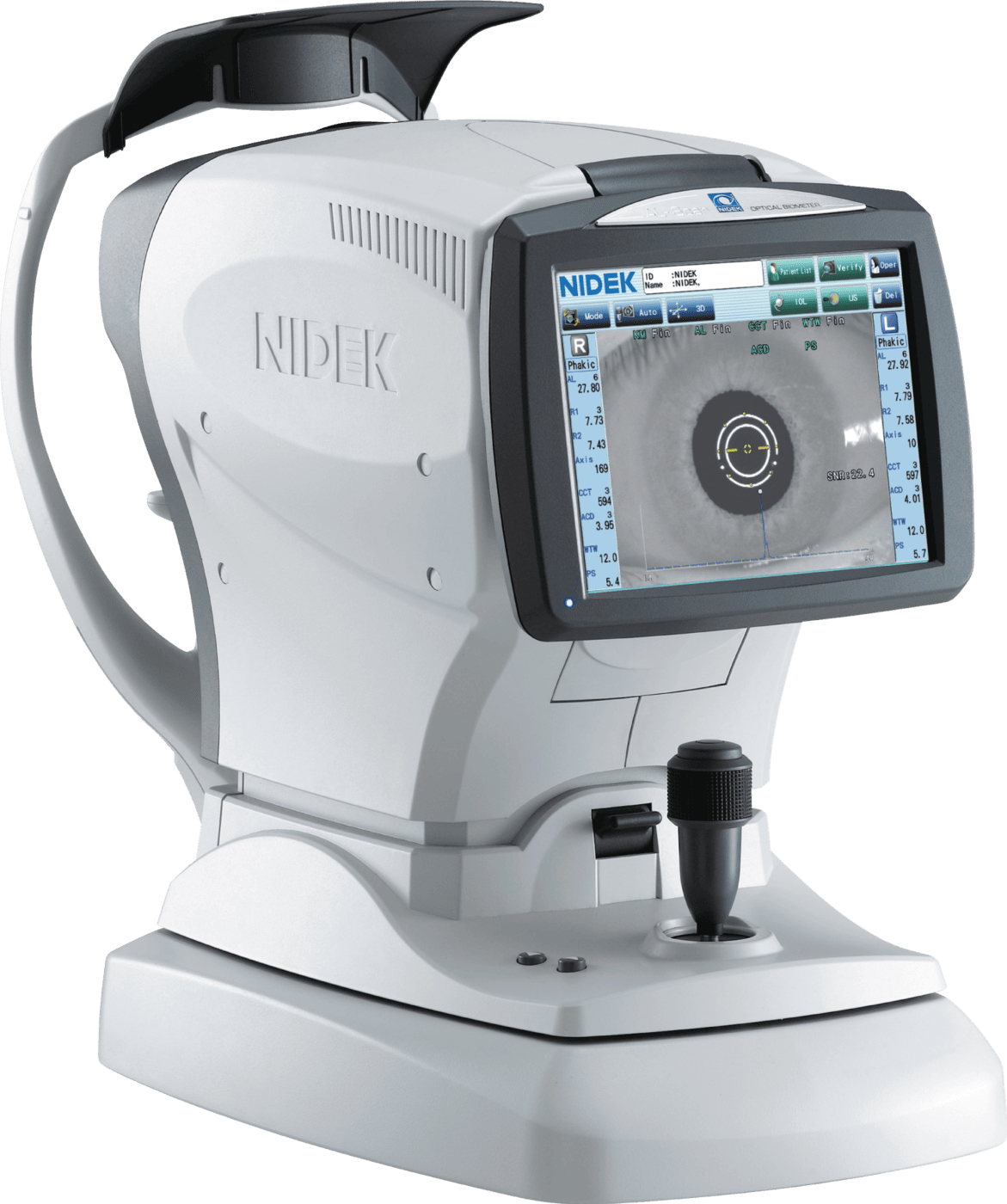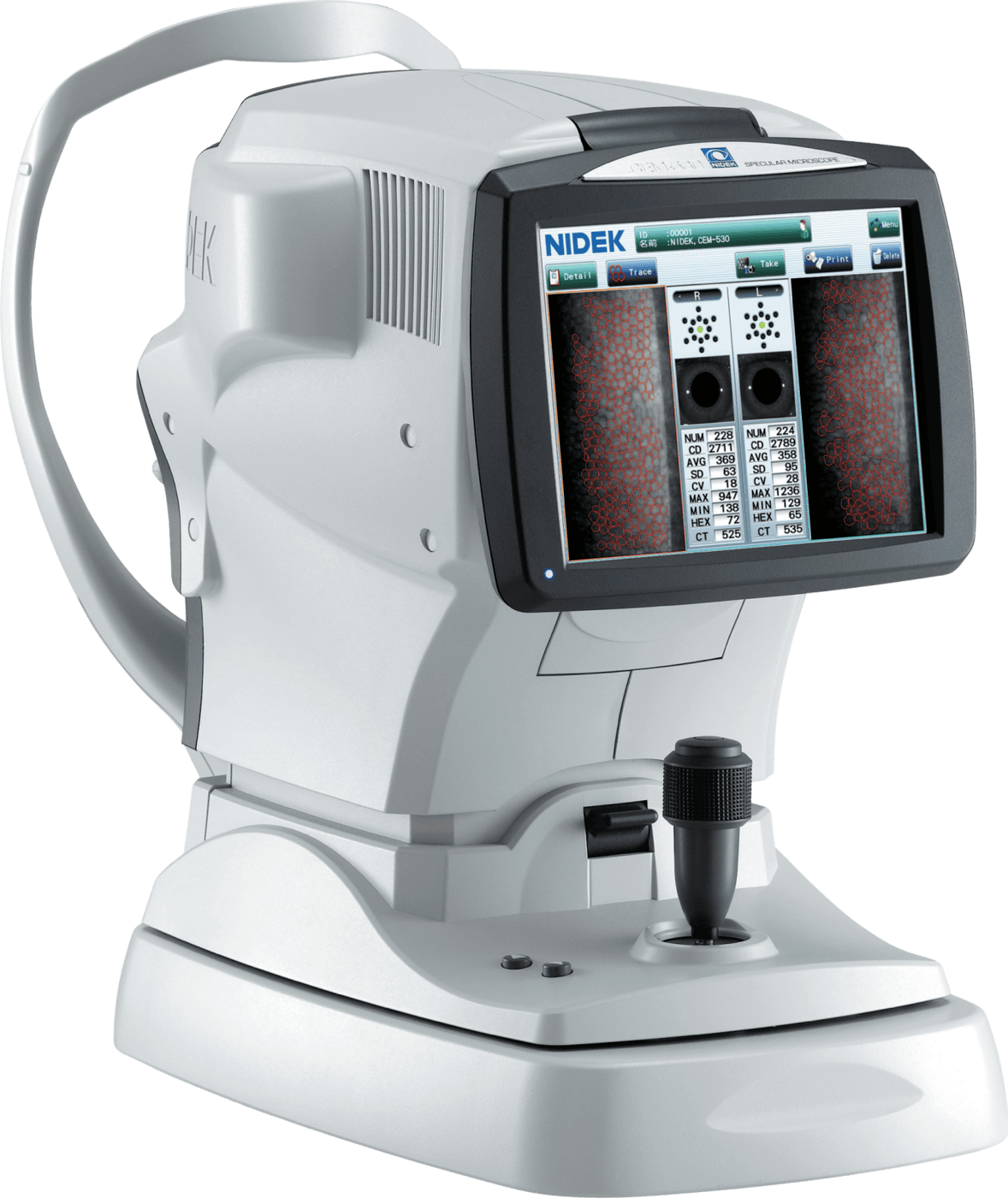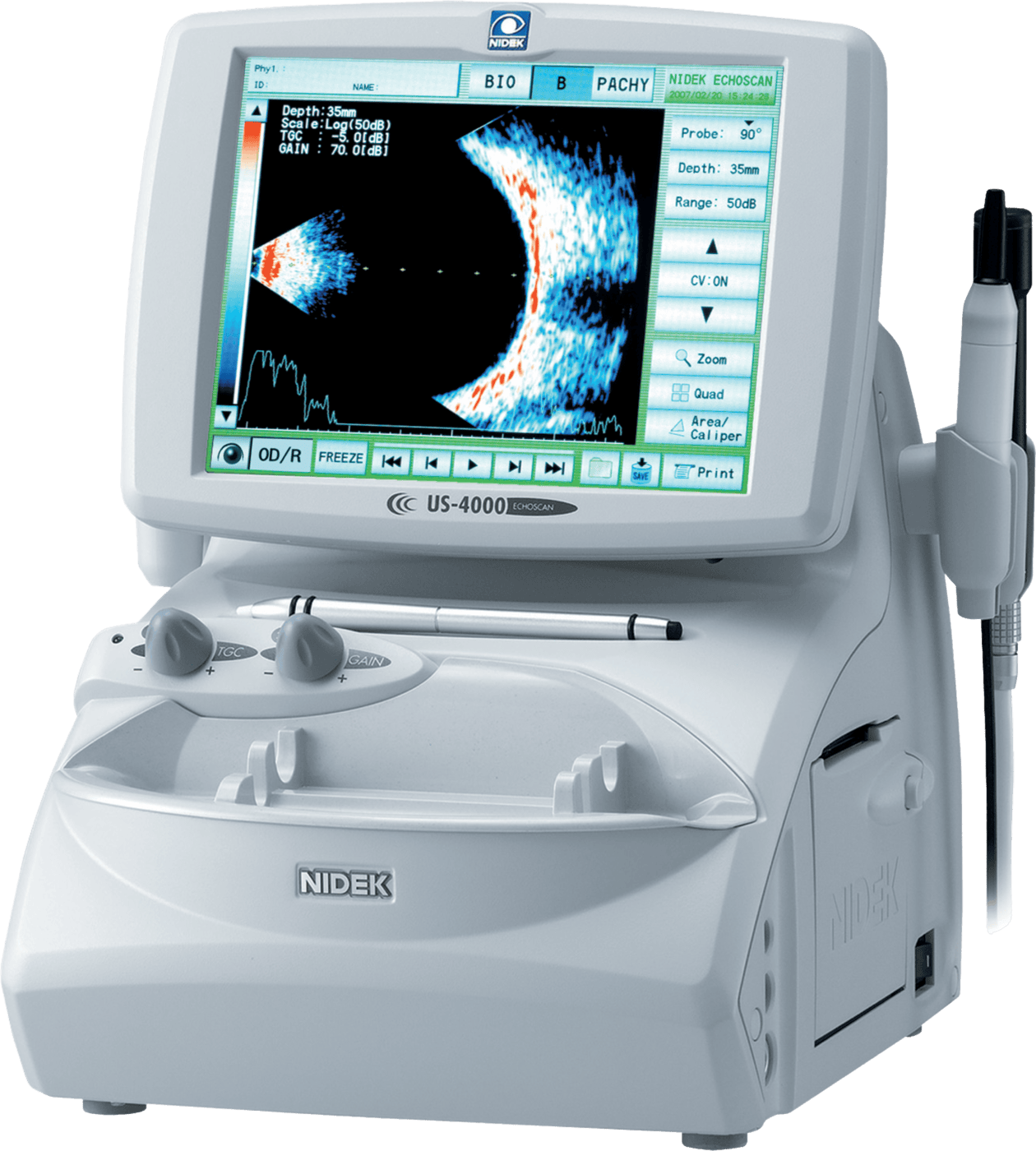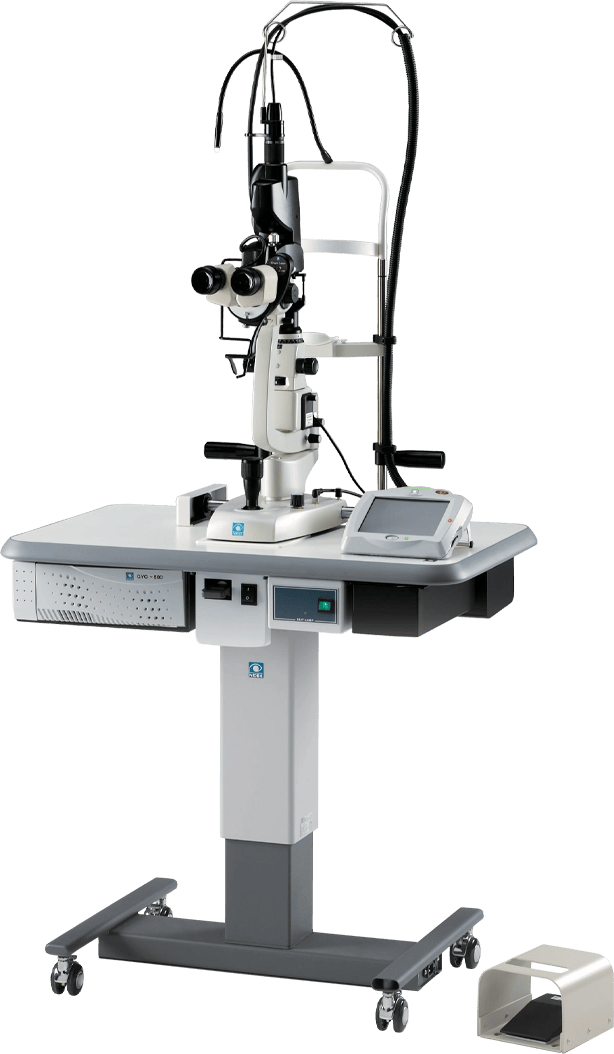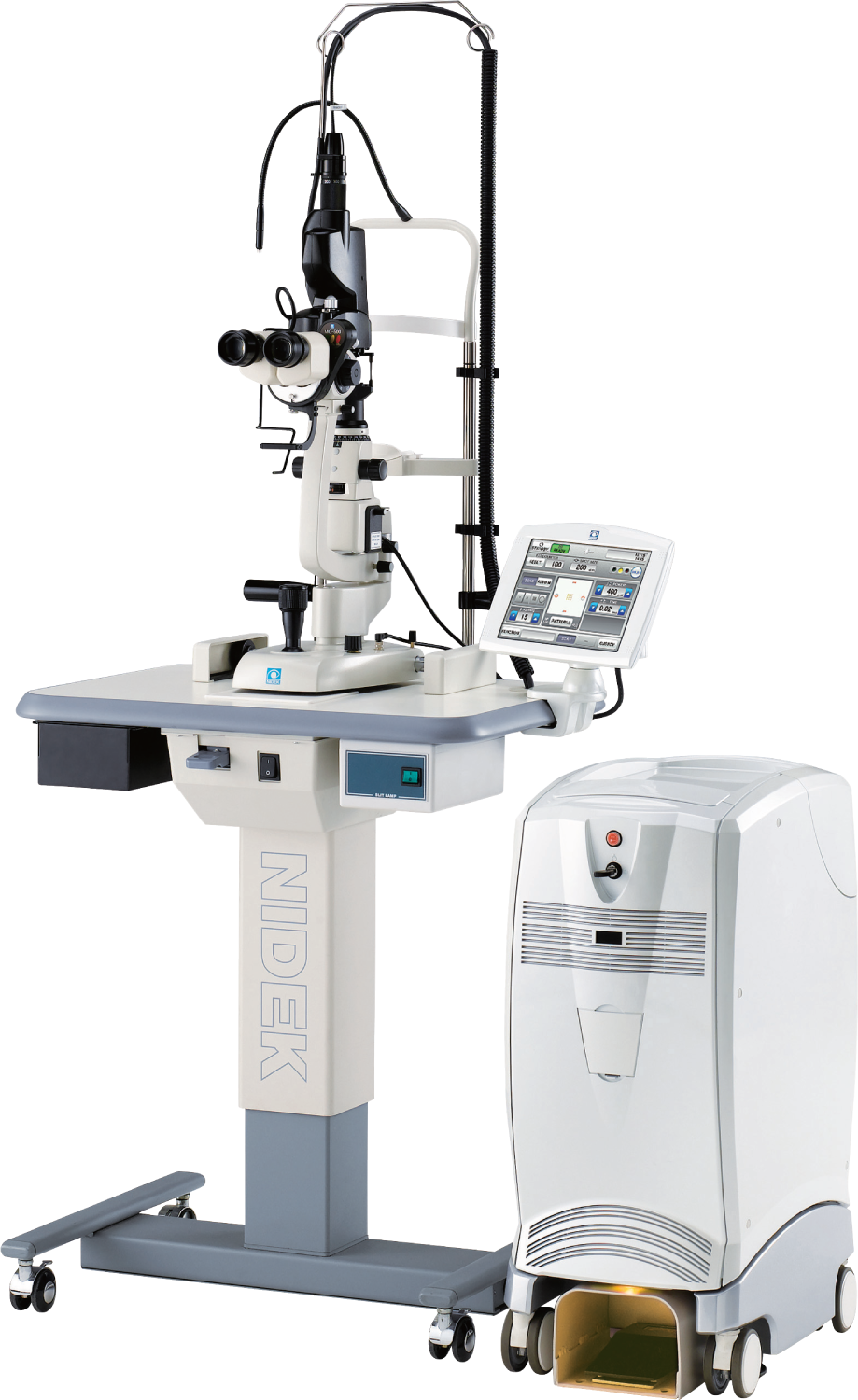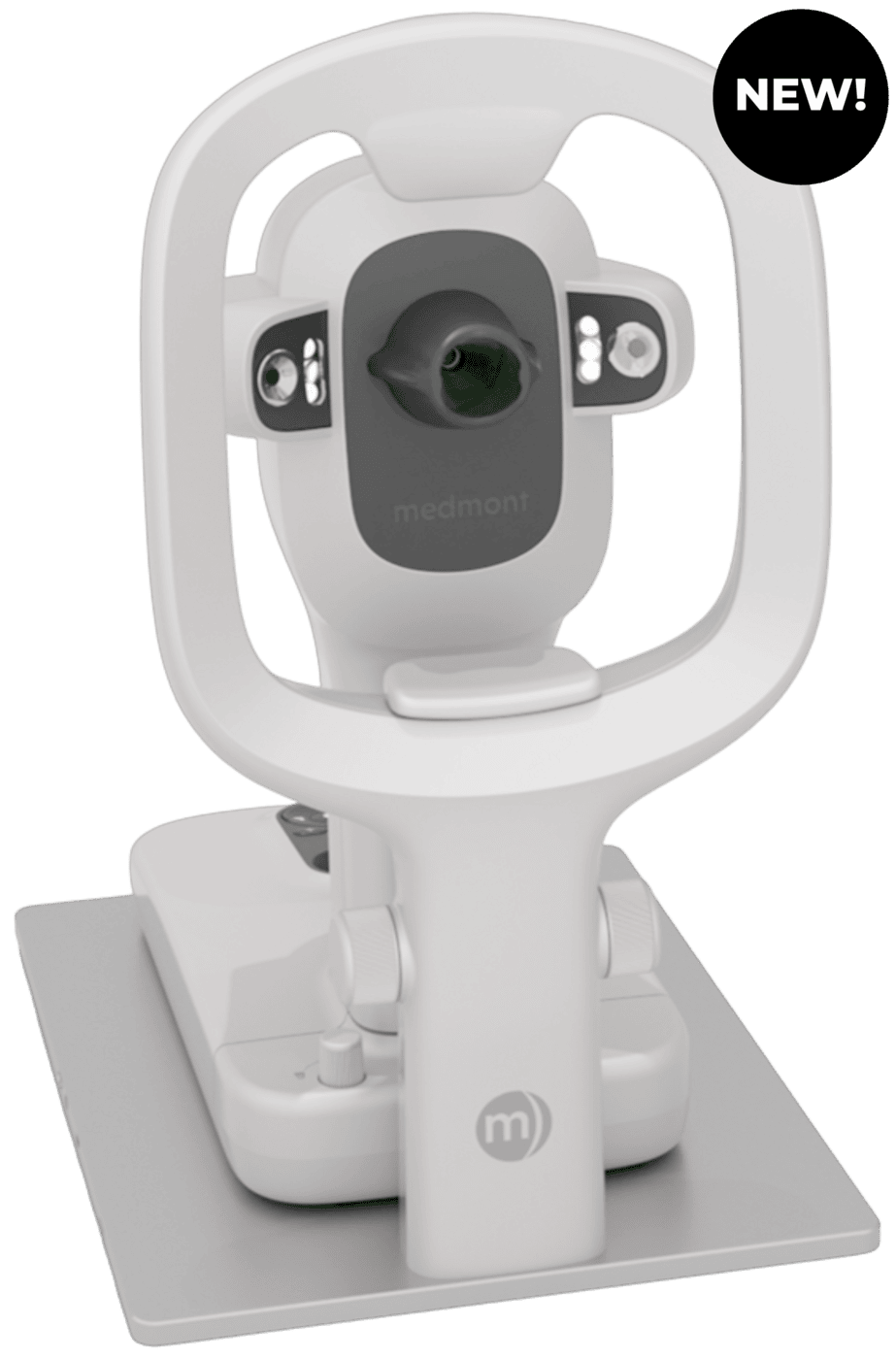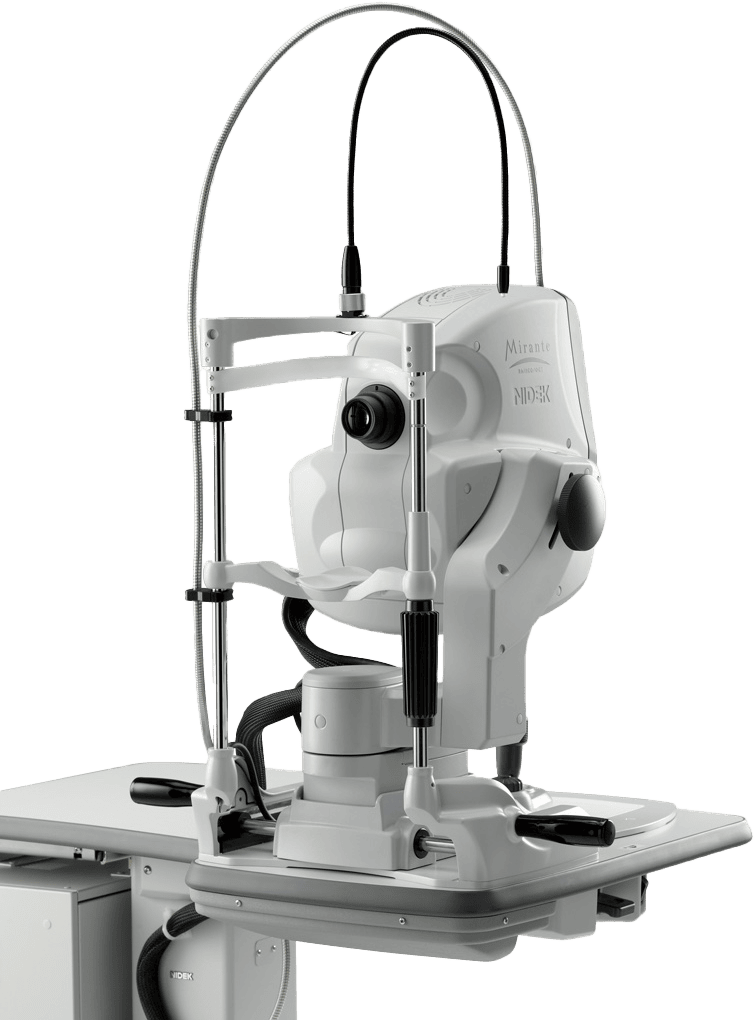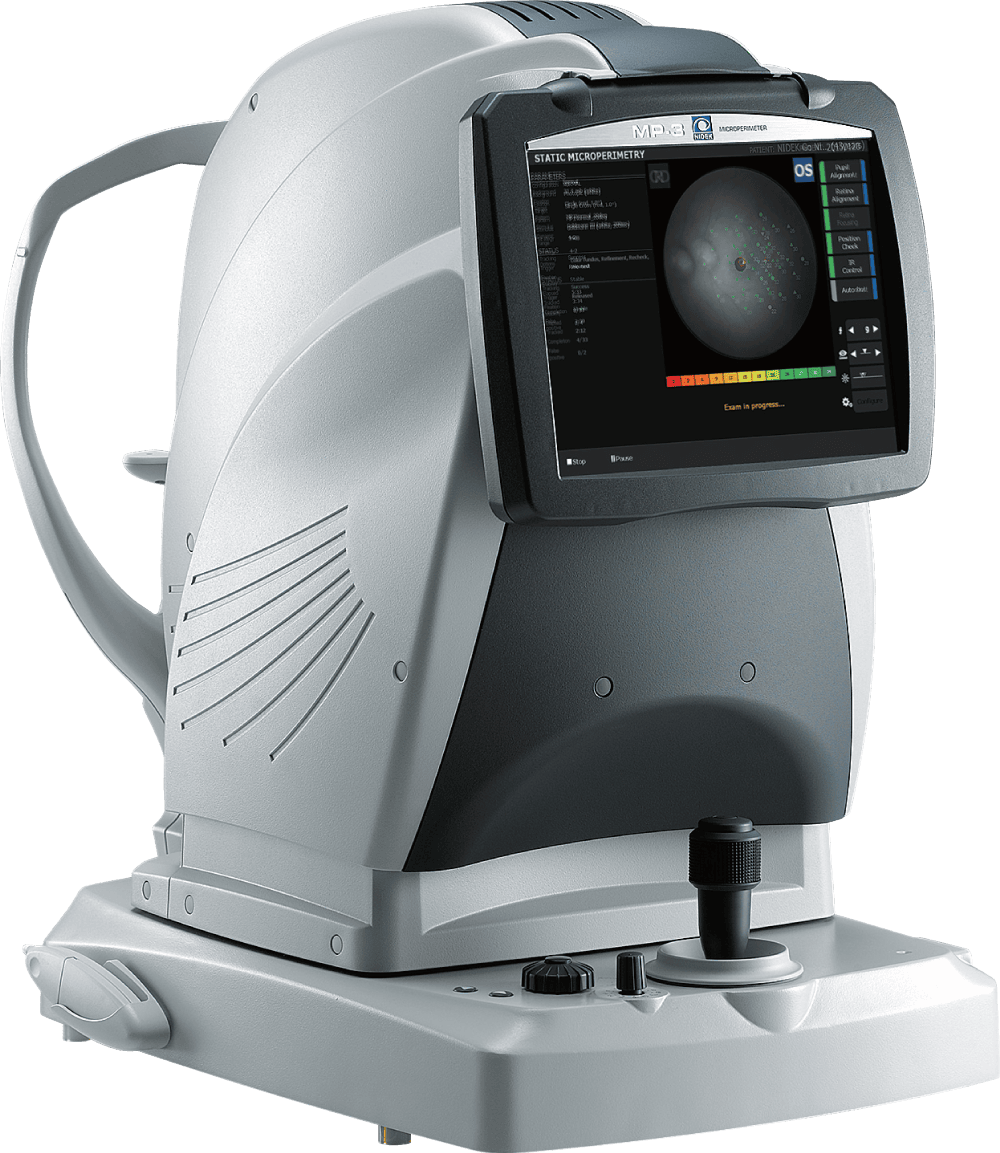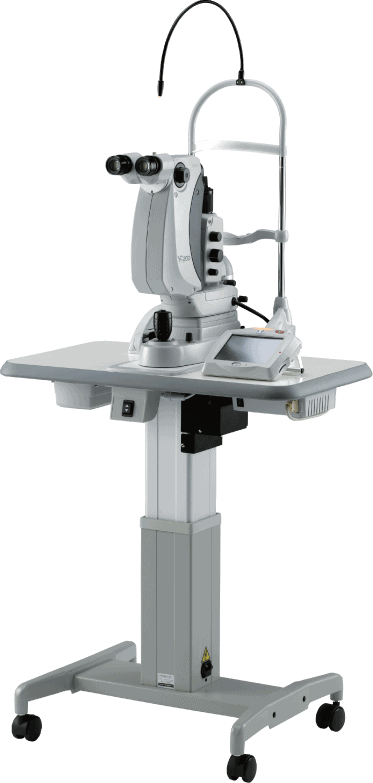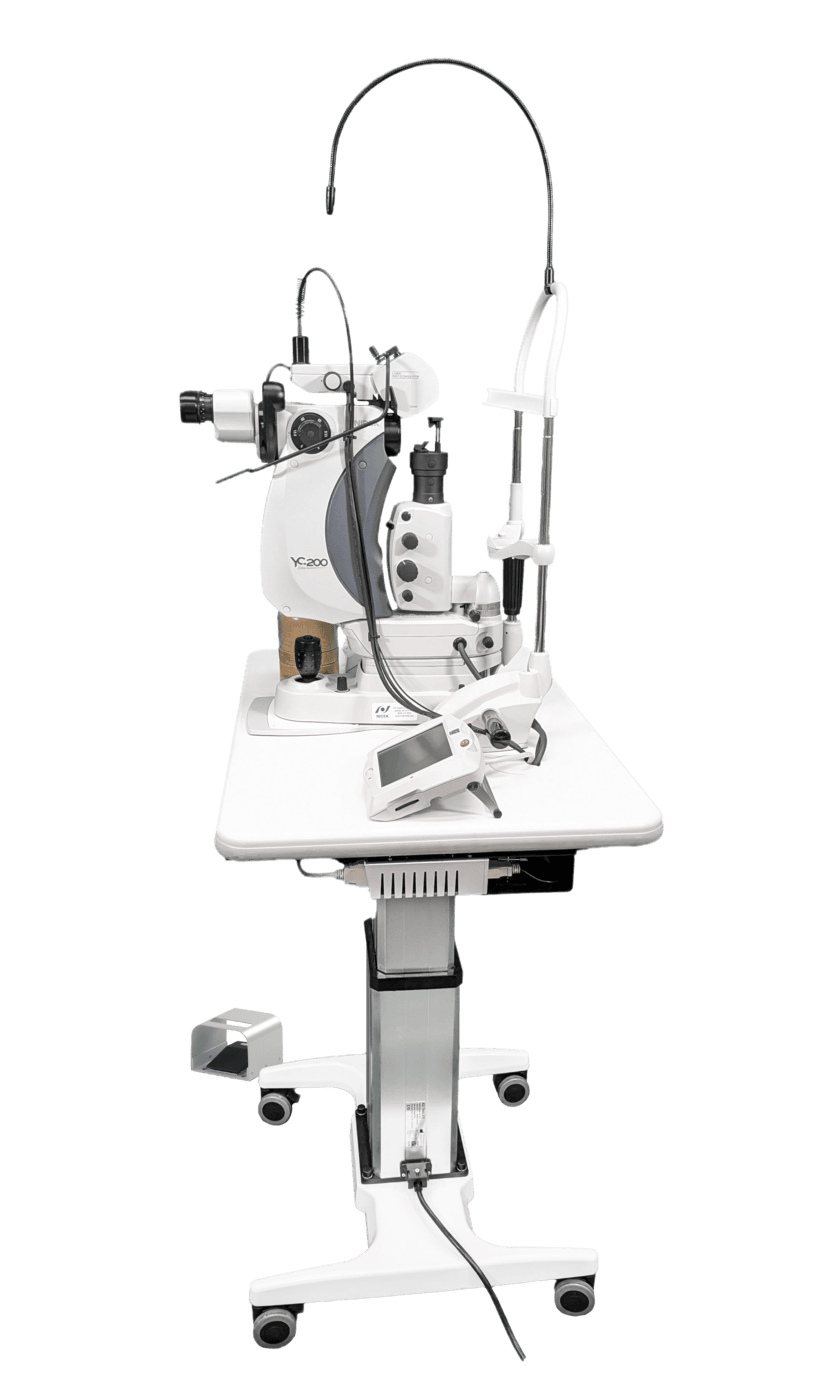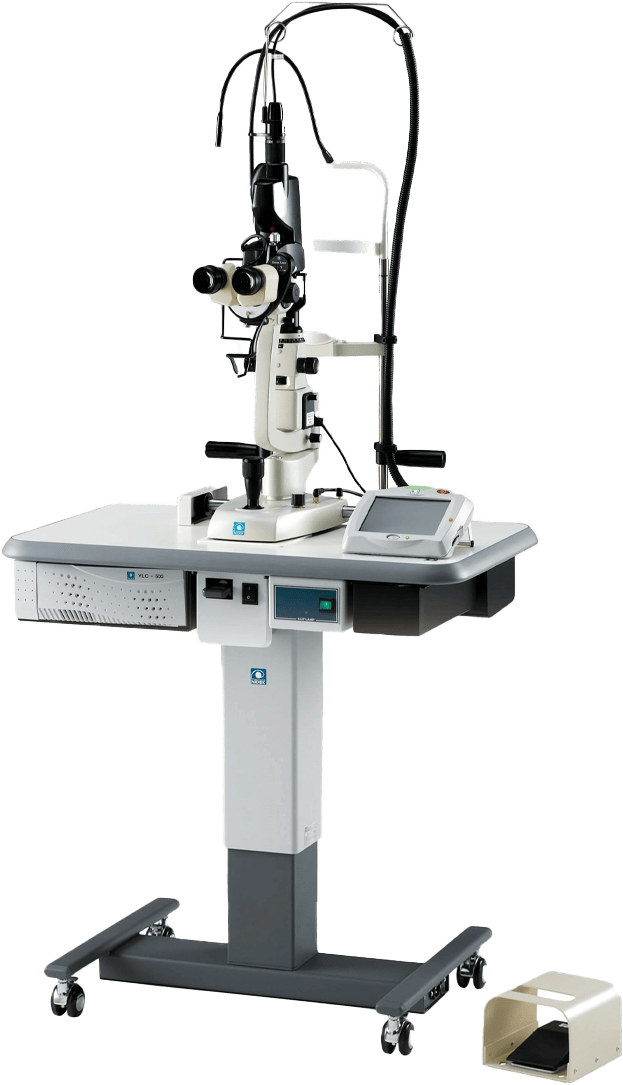Advanced Scleral + Corneal Topographers Distributed By NIDEK Meridia
Technical Specifications
Specifications: Vantage
Device
Corneal & Scleral Topographer
Model
Meridia Vantage
Type
Diagnostic
Specialty
Cornea, Scleral
Method of measurement
Corneal Topography:
Placido
Sclera on Fluorescein Topography:
Line projection
Coverage
Standard Capture:
0.25 –11mm
Sclera on Fluorescein Topography:
20mm (Horizontal) 18.5mm (Vertical)
Field of View
Topography: 17.5 mm ± 0.5mm (H)
Fluorescein: 20.0 mm ± 1.0mm (H)
External Image: 26.0 ± 1.0 mm (H)
Meibomian Image: 26.0 ± 1.0 mm (H)
Scleral Image: 22 ± 1.0 mm (H)
Illumination
Topography: White LED (2500-5000K) & IR LED 850-860 nm
Cone Illumination: Blue LED 470-480 nm
Fluorescein: Blue LED 470-480 nm
External Image: White LED (2500-5000K)
Meibomian Image: IR LED 850-860 nm
Scleral: Cobalt blue LED 460nm
Light hazard classification
Group 2 according to ISO15004-2:2024
Recommended maximum exposure
HA-R = 10J/cm with:
RME = 2min for blue external light for each eye
+RME = 10min for white external light for each eye
+RME = 10min for blue scleral light for each eye
(exposure not cumulative)
Power Range
10 –100 Diopters
Measurement Points
9,600
Accuracy (calibration ball)
Corneal Topography
<0.1 Diopter
Repeatability
Corneal Topography:
< 0.1 Diopter
Scleral Topography:
±10um accuracy (@ 15.9mm chord)
Calibration object
Corneal Topography:
R8.000mm ±0.001mm
Scleral Topography:
R12.700 ±0.005mm;
calibration accuracy ±0.001mm
Eye level adjustable rating
Nominal (Canthus) imaging height: 386 ±2 mm
Chinrest adjustable range: 76mm ±2 mm
Instrument adjustable range: Nominal -23mm to +15mm
Full Suite
Corneal-scleral Topography
Increased Field of View Topography
Tear Meniscus Height Measurements
Scotopic and Photopic Pupil Measurements
High-Resolution Digital Color Imaging
Anterior Imaging and Video
Meibomian Gland Imaging
Fluorescein Imaging and Video
Proven Imaging Grading Scales
EFRON
BHVI
Meiboscale
Optimized Depth of Field Focus
Focus Guidance Aid
Horizontal Visible Iris Detection
Scleral Lens Simulation
Advanced Software
Regression Analysis
Subtractive Maps
Orthokeratology Analysis
Myopia Management Analysis
Anatomical Analysis (or Metrics)
Pupil Diameter
Iris Diameter
Corneal and Scleral Height Calculation (or Estimation)
Number of Rings
32
Power Requirements
100–240 VAC, 50/60Hz
Isolation Transformer:
As required: Medical grade, compliant with IEC 60601-1 with the local market clearance.
Min 500W, Min 4 outlets for national mains voltage or IEC C13 outlets.
For North America use with medical grade mains cord only.
PC and mains powered peripherals
Compliance with IEC62368-1 or EN/IEC60950 (electrical safety),
CISPR22 EN/IEC55022 (EMC)
PC and associated equipment minimum requirements
Operating System:
Windows 11 Professional and Home (64 bit) Professional recommended.
Windows 10 Professional and Home (64 and 32 bit) Professional recommended.
Windows Server 2016, 2019, 2022 (64-bit editions only).
PC Hardware:
Processor: Intel i5 generation 6 processor or later.
Motherboard: Genuine Intel™ chipset highly recommended.
Memory: 8 GB for non-video captures, 16 GB for video captures.
Hard Disk Space: 40 GB for non-video captures, 200 GB for video captures (more for larger databases or busy practices).
Video Card: GPUs with dedicated memory of 2 GB or more are recommended. GPUs that share memory require 128 MB of memory minimum and are not recommended for video capture.
Screen Resolution: Recommended 1920×1080. Minimum supported 1280×800.
Dimensions
Width: 11.8 in (300mm)
Depth: 16.5 in (421mm)
Height: 15.1 in (386mm ± 2mm)
Weight
Gross: 33 lbs. (15 kg)
Net: 24.2 lbs. (11 kg – Unit & Chinrest Only)
Specifications: Classic & Pro
Device
Corneal Topographer
Models
Meridia Classic & Pro
Type
Diagnostic
Specialty
Cornea
Coverage
Standard Capture: 0.25 –11mm
TCC (Composite): Limbus to Limbus
Field of View
Topography: 17.5 mm(H)
Fluorescein: 20.0 mm(H)
Anterior Image: 26.0 mm(H)
Meibomian Image: 26.0 mm(H)
Power Range
10 –100 Diopters
Measurement Points
9,600
Increased Field of View Topography
Tear Meniscus Height Measurements
Scotopic and Photopic Pupil Measurements
High-Resolution Digital Color Imaging
Anterior Imaging and Video
Meibomian Gland Imaging
Fluorescein Imaging and Video
Proven Imaging Grading Scales
EFRON
BHVI
Meiboscale
Optimized Depth of Field Focus
Focus Guidance Aid
Horizontal Visible Iris Detection
Scleral Lens Simulation
Advanced Software
Regression Analysis
Subtractive Maps
Orthokeratology Analysis
Myopia Management Analysis
Anatomical Analysis (or Metrics)
Pupil Diameter
Iris Diameter
Corneal and Scleral Height Calculation (or Estimation)
Number of Rings
32
Power Requirements
100-240 VAC, 50/60 Hz
PC Requirements
OS: Microsoft™ Windows™ 10 Pro 64 bit edition, version 1909 or later.
Processor: Intel i5 generation 6 processor or later.
Motherboard: Genuine Intel™ chipset highly recommended.
Memory: 8 GB for non-video captures, 16 GB for video captures.
Hard Disk Space: 40 GB for non-video captures, 200 GB for video captures (more for
larger databases or busy practices).
Video cards that share main memory are not recommended.
Screen resolution: Recommended 1920 x 1080. The Minimum supported 1280 x 768.
USB: At least one free USB 3.1 generation 1 compliant port of the PC.
PC and Mains Powered Peripherals
EN/IEC60950 Compliant
Dimensions
Width: 9.25 in (235mm)
Depth: 13.5 in (345mm)
Height: 18.50 in (470mm ±15mm Stroke)
Weight
22.04 lbs. (10 kg – Unit Only)
What’s Included
Limited Service Warranty
Complimentary Support
On-Site & Remote Assistance
Access to Learning Resources
Start here
Support and Services from World-Class Experts
Learn how you can prolong the lifetime of your investments while saving money and reducing costs.
